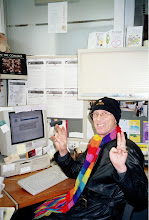The amount first home buyers borrowed to make their housing purchase doubled in the 10 years to 2005-06, new statistics show.
The average loan per household rose to $213,000, according to the latest Australian Social Trends.
During the same period, the average value of first-buyer homes rose to $310,000.
But the proportion of first home buyers purchasing new houses fell to 14 per cent, from 23 per cent.
More popular were townhouses and apartments which made up 27 per cent of purchases, up from 15 per cent.
Over the past decade, a slightly higher proportion of Australian households rented their homes (28.5 per cent), up 1.5 per cent.
And perhaps not surprisingly, they moved around a lot more than owner occupiers.
More than a third of all renters had changed address in the past year, three times the rate of their occupiers.
But the profile of renters varied substantially with age, with the average age of renters being 37 years, 15 years younger than the median age for owner occupied households.
And the decision to rent rather than own mattered a lot if the household had a sole parent.
Sixty per cent of lone parent households with dependent children were renting, almost three times the rate of couples with dependent children. The ABS says this reflected relatively lower incomes for single parent families.
Nearly 30 per cent of households were renting their homes and the biggest renting age group was 35- to 44-year-olds.
The majority of renters were young adults and low-income families.
Australia's growing ... except for NSW
Australia is growing steadily, its cities are growing faster than country regions, but NSW continues to lose its population faster than any other state.
Australians also like to volunteer their services, with one in five adults undertaking a voluntary task each fortnight, and they're more likely to volunteer if they're healthy.
And they're more likely to have visited a naturopath, acupuncurist or chiropractor over the past few decades.
While the number of alternative health practitioners had almost doubled since 1996 top 8600, visits have increased by 50 per cent to around three quarters of a million in the same period. Almost a quarter of a million people had visited an alternative health practitioner in a sample two- week period.
Welcome to Australian Social Trends, the annual snapshot of national life produced by the Australian Bureau of Statistics.
The survey is drawn from a mass of data - some of it already published but much unpublished - taken from the five-yearly ABS census and aimed at looking at contemporary social issues and areas which concern public policy makers.
Over the past decade, the nation swelled by 2.5 million people to 21 million by June 2007, with the greatest increase in population - 315,700 - happening in the past year. It's expected to reach 28 million by the middle of the century.
Public transport is becoming a more familiar way for adults to get to work, but it's still a minority of citizens who use buses, trains and trams. Nineteen per cent of city-based workers now use public transport daily, compared to 16 per cent a decade ago.
And internet access at home has ballooned over the past decade, with just under two thirds (64 per cent) of households with access, up from 16 per cent in 1998.
"Some government services, such as E-tax, child support and a range of Medicare functions, are now available online," according to the ABS.
"News services, internet shopping, and personal communications such as email, instant messaging and social networking sites are also increasingly a feature of people's daily lives."
While it's predominantly a younger age group which uses the internet at home, there have been significant increases in people aged over 55 using the internet.
In 2004, around 40 per cent of people aged between 55 and 64 used the internet, but within two years the takeup rate had lifted to 55 per cent.
Indonesia tells bombers families get ready
17 years ago


No comments:
Post a Comment